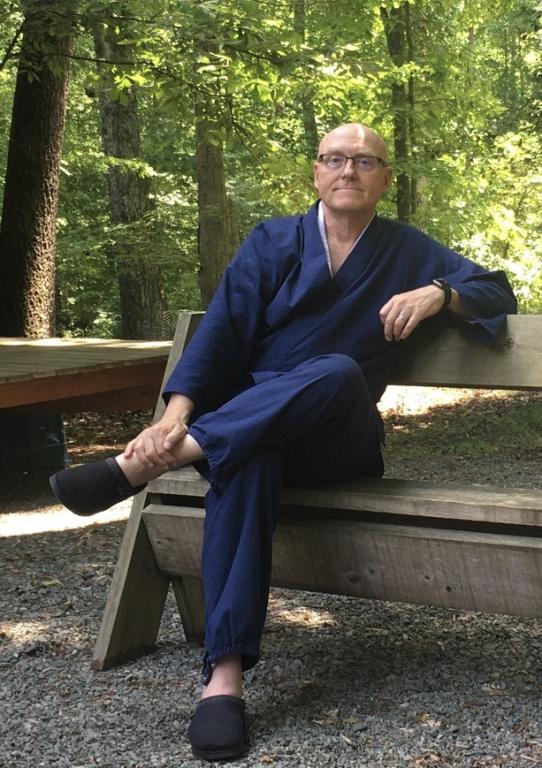I recently wrote a piece titled, The “Soto Zen” of the PMSO: A New Religion Whose Time Has Passed, wherein I call out a text titled “Shushōgi” (“The Meaning of Practice Enlightenment”), a late-19th century summary of the teaching of Dōgen Zenji that has served as a fairly succinct synopsis (~3,000 words in translation) of Sōtō Zen for the last 130 years.
“Shushōgi” was created by selectively cutting and pasting from Dōgen’s writings in order to reframe Sōtō Zen as a practice for householders. As I wrote, “The authors … left out any mention of zazen, awakening, and the teacher-student relationship and instead emphasized four points: ‘1. Repenting and Eliminating Bad Karma; 2. Receiving Precepts and Joining the Ranks; 3. Making the Vow to Benefit Beings; 4. Practicing Buddhism and Repaying Blessings.'”
There’s nothing wrong with any of that, of course, other than it is a portion of the path that “Shushōgi” presents as if it were the whole. I argue that “Shushōgi” reflects a rather desperate effort to recreate Sōtō Zen in the image of Protestant Christianity such that it would appeal to late-19th century Japanese householders. And although “Shushōgi” clearly still speaks to some, in my view, it does not offer a compelling vision of Sōtō Zen for the present or future.
Ever since I wrote that post, the idea of creating a new “Shushōgi” has been coming to mind. And I’ve been responding to myself, “Nah, come on!” and batting the idea down. But recently, given that I do try to offer something positive rather than just wantonly complain, I gave in and began pulling something together using the same methodology as the old “Shushōgi” creators – cutting and pasting from Dōgen’s writing based on what I find important and compelling.
Dōgen, afterall, left no indication that he would center and privilege those passages selected for the old “Shushōgi,” so why not give it another whirl? In any case, it was a fun exercise for me to summarize Dōgen’s teaching based on zazen, awakening, and the teacher-student relationship, as mentioned, but also emphasizing vow, and all the while including the heart of Dōgen’s mode of expression – the Zen kōan, also excluded from the old “Shushōgi.”
So just like the late 19th century reformers who cobbled together their “Shushōgi,” based it on what they thought was most important for Japanese householders at that time, I’ve cobbled together this one based on what I think is important for students in our global dharma culture today. Unlike the old “Shushōgi,” however, I’ll bet that you won’t come away from this one thinking that it’s been dumbed down for you.
In addition, given the prevalence of the Post Meiji Sōtō Orthodoxy’s (PMSO) narrative about Dōgen’s teaching, you might find some of this new “Shushōgi” surprising. Dōgen recommending kōan and even muji, for example?! You might find yourself saying, “Nah, come on!”
So I feel compelled to assure you that I didn’t make any of this up, nor did I even translate it myself (see the footnotes). Instead, I’ve selected Dōgen passages from about twenty fascicles of the Shōbōgenzō and a few from Eihei kōroku while borrowing from the work of about ten translators. I still come in at about two-thirds the length of the original (~2000 words).
You will notice that in the title, instead of “practice enlightenment” for 修證 shushō, I’ve rendered these characters “cultivating verification.” In the former case, “practice” has become numbingly overused to a point approaching meaninglessness. In addition, shu, 修, has the sense of cultivating through intention, a nuance that I believe Dōgen intended.
As for shō, “證,” as “verification,” this is one of the characters that is commonly used in Chinese Buddhism for awakening, enlightenment, or realization. In addition to verify, it means to prove, demonstrate, or confirm. Although Dōgen used the other common characters for awakening too, he had a slight preference for this character, 證, given that it emphasizes that our practice (or rather cultivating) is about verifying the truth of the buddhadharma and echos his original expression of great doubt – if we’re already Buddha, then why do we need to cultivate?
After I published the above mentioned post, The “Soto Zen” of the PMSO: A New Religion Whose Time Has Passed, I heard what seemed to be some defensive responses from practitioners who were devoted to the old “Shushōgi.” So I’ll reiterate – I’m not saying that the old “Shushōgi” was wrong. I have no problem with anyone reciting it, teaching it, and even singing it baika style. I’m just saying that, in my view, it does not strike the best notes for our times.
Dōgen’s teaching, and the One School Zen he emphasized, could also be summarized like this.
You will find the pdf of the new “Shushōgi,” “Cultivating Verification in One School Zen: A New Shushōgi for Now,” by clicking here and scrolling to the bottom of the page.
Dōshō Port began practicing Zen in 1977 and now co-teaches with his wife, Tetsugan Zummach Sensei, with the Vine of Obstacles Zen, an online training group. Dōshō received dharma transmission from Dainin Katagiri Rōshi and inka shōmei from James Myōun Ford Rōshi in the Harada-Yasutani lineage. He is also the author of Keep Me In Your Heart a While: The Haunting Zen of Dainin Katagiri. Dōshō’s translation and commentary on The Record of Empty Hall: One Hundred Classic Koans, was published in 2021 (Shambhala). His third book, Going Through the Mystery’s One Hundred Questions, is now available. Click here to support the teaching practice of Dōshō Rōshi.













